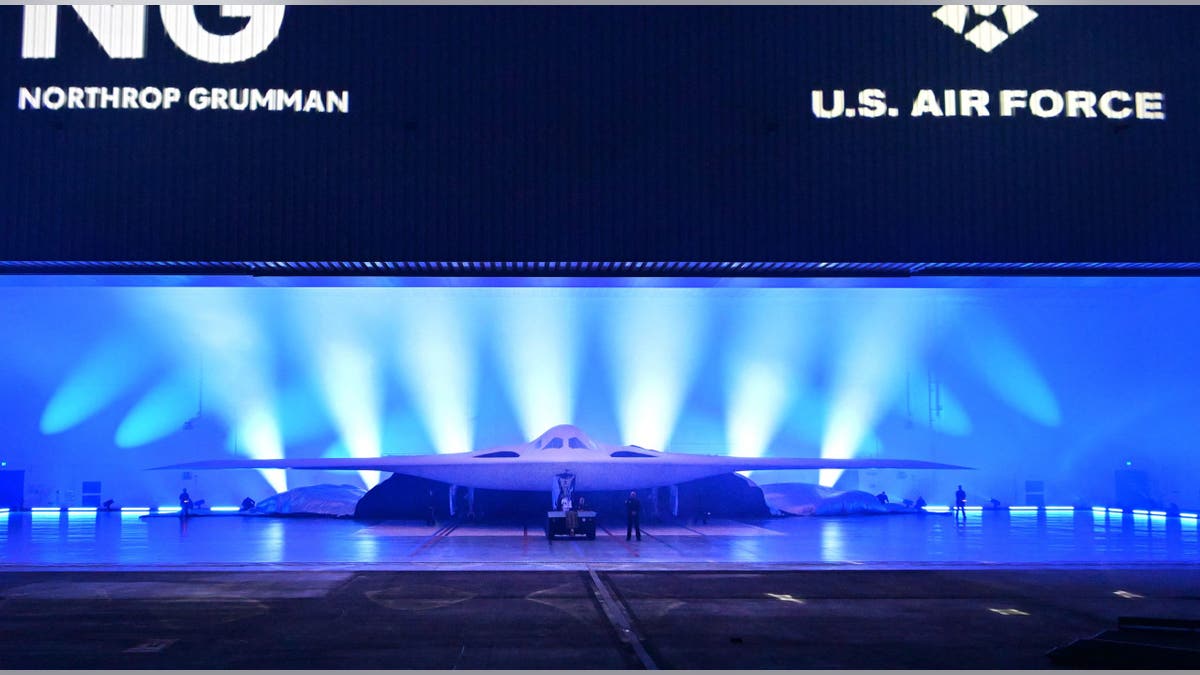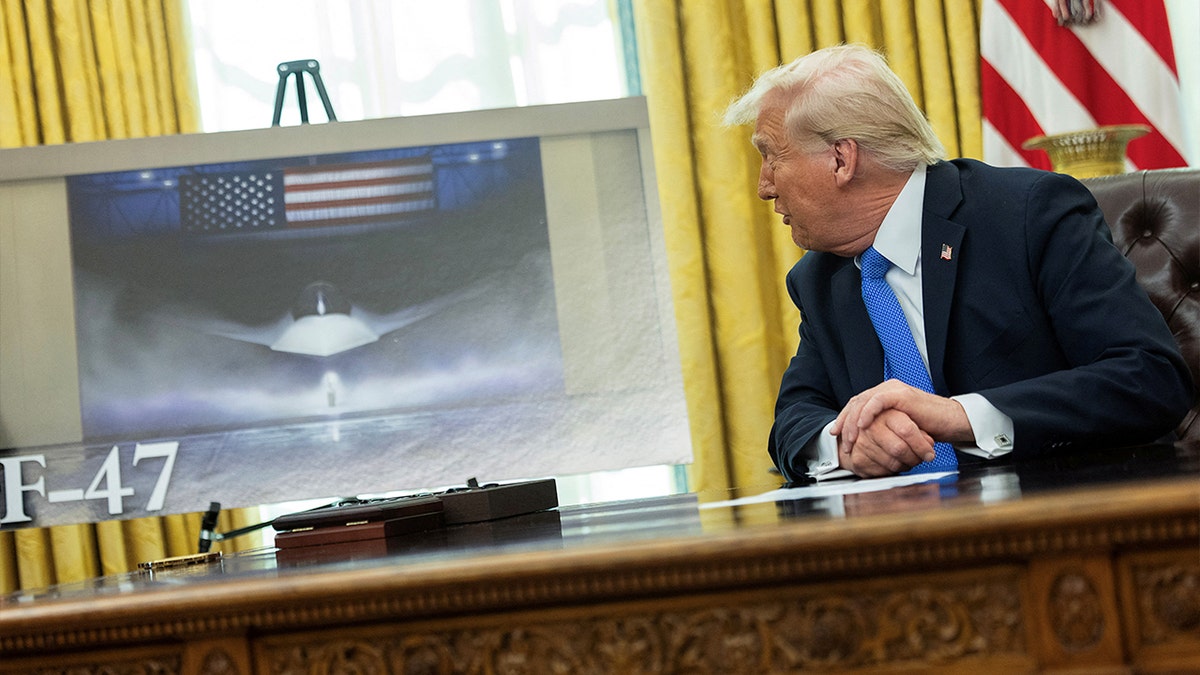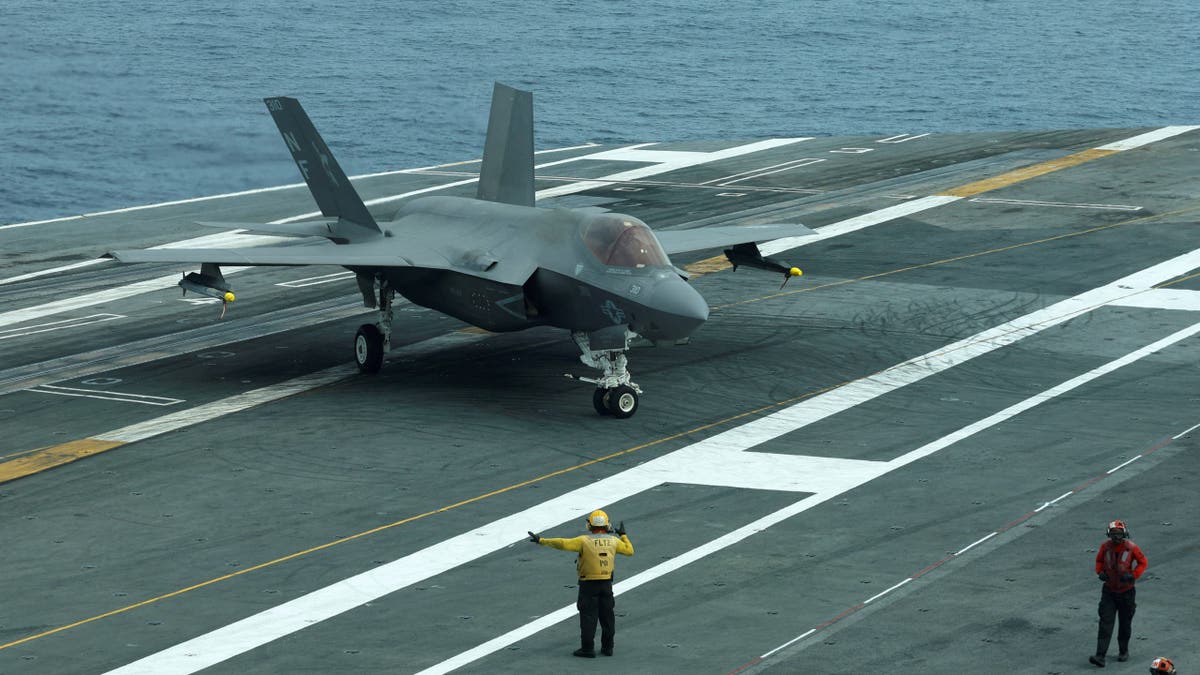

The race to develop 6th-generation aircraft is no longer a future vision – it’s now a defining force behind U.S. defense strategy.
With cutting-edge platforms like the B-21 Raider, the F-47 and the Navy’s F/A-XX on the horizon, the Pentagon is reshaping how the U.S. projects airpower for the next 50 years.
These aircraft promise unprecedented advances in speed, stealth and autonomy – but they’re also colliding with budget pressures, industrial capacity limits, and an increasingly uncertain global threat environment.
Northrop Grumman’s B-21 Raider is poised to become the backbone of U.S. long-range strike capability. With its next-gen stealth design, reduced maintenance burden and affordability compared to its B-2 predecessor, the B-21 is seen as critical to deterring strategic threats like China and Iran.
The urgency became clear last week when seven B-2 bombers flew an 18-hour mission to Iran, dropping bunker-busting bombs on nuclear targets. While effective, the B-2’s high cost and aging systems underscore the need for its replacement. At $692 million per aircraft — compared to $2 billion for a B-2 — the B-21 offers strategic reach at a more sustainable price.
The high-tech stealth bomber can carry nuclear and conventional weapons and is designed to be optionally manned, meaning it could fly without a crew on board.
PENTAGON UNVEILS $961B BUDGET REQUEST: FUND FOR GOLDEN DOME, MISSILES AND DRONES, FEWER F-35 JETS
Flight tests are already underway at Edwards Air Force Base, with three B-21s in the air and the first units expected to achieve operational capability by 2027. The Air Force has committed to at least 100 Raiders, with internal discussions floating a potential scale-up to 200.
"What we need to consider is doubling the production capacity as rapidly as possible to bring up that inventory," said Gen. David Deptula.

The new B-21 Raider is unveiled during a ceremony at Northrop Grumman's Air Force Plant 42 in Palmdale, California. (Frederic J. BROWN / AFP via Getty Images )
Once stalled, the Air Force’s Next Generation Air Dominance (NGAD) program roared back to life this spring under a new name and a new contract. Now designated the F-47, the program – awarded to Boeing – is designed to be the most advanced manned fighter in U.S. history. Its capabilities will include stealth, extended range, speeds exceeding Mach 2 and integration with a new class of AI-enabled drones called Collaborative Combat Aircraft (CCA).
The F-47 will serve as the "quarterback" for a team of 1,000 CCAs, controlling them in battle and coordinating sensor and targeting data in real time.
"It's critically important that President Trump proceeded with the manned platform for the Air Force," said former Rep. Mike Garcia, R-Calif. "This academic debate about unmanned-only platforms is aspirational – but the networks just aren’t there yet."
The aircraft has an ambitious timeline for initial operational capacity – within the 2025-2029 range, according to a graphic posted by Air Force chief of staff David Allvin on X.
The Pentagon is going all-in on the F-47 in the 2026 budget: requesting $3.5 billion while decreasing its request for F-35s from 74 to 47. Garcia, a former Navy pilot, emphasized that human pilots are still essential for managing the complexity of 21st-century warfare.
However, others within the Pentagon argue that manned fighters may become obsolete before the F-47 is even fully fielded.
"AI technologies are evolving far more rapidly than anyone predicted," a former senior defense official said. "If they continue to evolve in five years... you’re on exactly the wrong path."
A GUIDE TO THE 'DOOMSDAY PLANE': THE US AIRBORNE COMMAND CENTER
Deptula decried "arbitrary" budgets that were set by Congress rather than defense officials' determination of what they need for readiness and argued the more-expensive F-47 might be able to do far more work than less elite aircraft.
"Individually, F-47 might be costlier than a previous fighter aircraft, but if it can achieve 15, 20, 30, 40 times what it would take to accomplish the particular outcome using non-stealthy or other less expensive aircraft, which one provides the most value? So that's where the decision calculus needs to go."

President Donald Trump revealed a rendering of the F-47 during a White House ceremony in March. (REUTERS/Carlos Barria)
Unlike the Air Force, the Navy is moving slowly with its own 6th-gen project — the F/A-XX. Garcia sees this as intentional, noting that naval airframes must withstand far greater environmental challenges than their Air Force counterparts.
Officials are still unsure whether the Navy’s next-gen fighter jet, F/A-XX, will move forward at all, according to the FY 2026 budget proposal.
"Waiting for a decision from the secretary of the Navy, secretary of defense, and the president," a defense official told reporters. "That's an active conversation, whether to continue with the program or not."
The program will proceed right now with "minimal funding" for design in the budget, the official said.
"Designing a naval variant of an Air Force aircraft on the same timeline? It’s impossible to do it correctly."
Instead, the Navy is expected to borrow technology – like engines and sensors – from NGAD while building a unique carrier-capable fighter suited for saltwater, catapults and fight deck operations.
However, Garcia warned that the Navy has a deeper, under-reported problem: a shortfall in carrier-based strike fighters.

The Pentagon is going all-in on the F-47 in the 2026 budget: requesting $3.5 billion while decreasing its request for F-35s from 74 to 47. ( REUTERS/Kim Kyung-Hoon/File Photo)
"A gold-plated 6th-gen aircraft in low quantities isn’t the answer. Slightly less capability in higher numbers is what the Navy needs."
However, Deptula said there’s a question of whether aircraft carriers will even continue to be viable in the future.
"The question that a lot of people in the Department of Defense are asking now is what's the viability of an aircraft carrier in a future world proliferated by hypersonic, very precise missiles with 1,500-mile-plus ranges."
Carriers "project power" in low-threat environments, Deptula said, but "most people recognize you're not going to put aircraft carriers close enough to use the aircraft."
"The Navy wants to lean in and get trillions more for sixth generation. The people that want to watch our $2 trillion deficit ought to keep that in mind here," the former defense official said.
